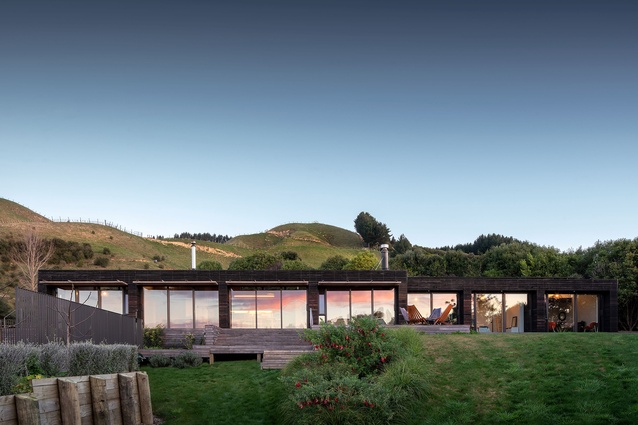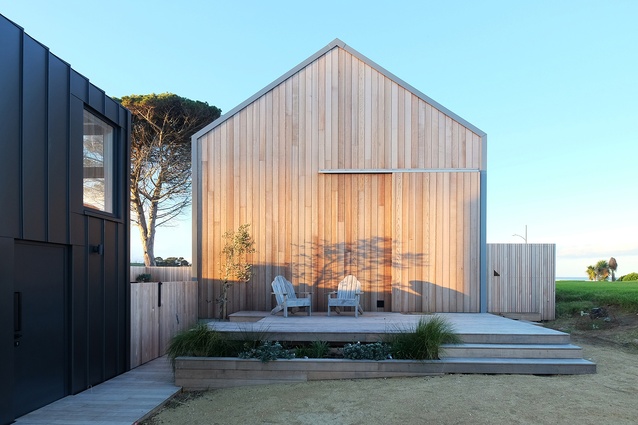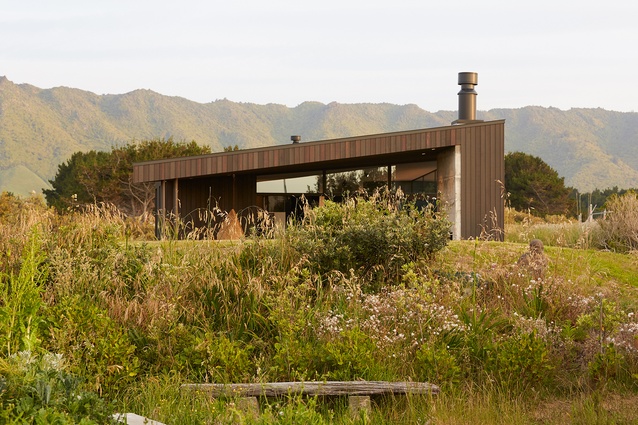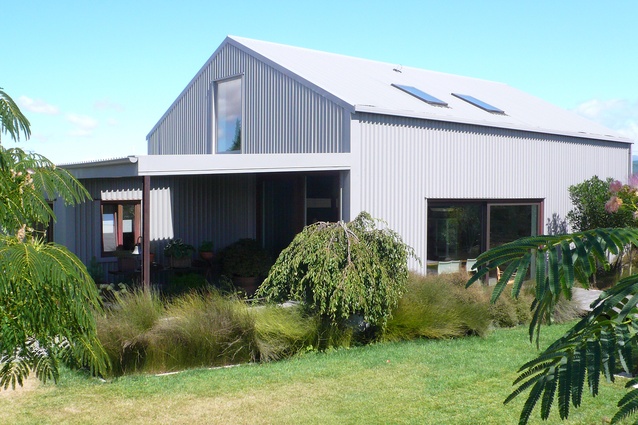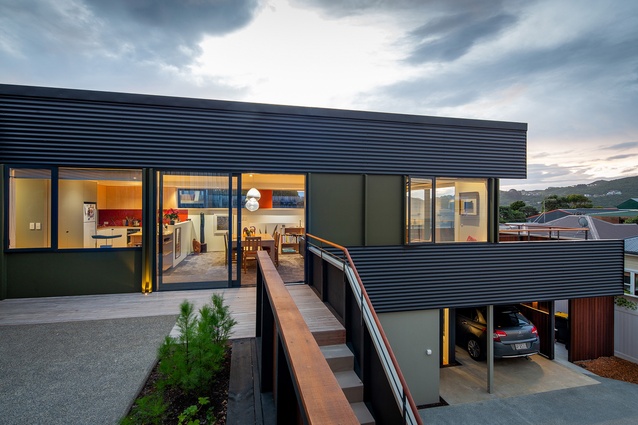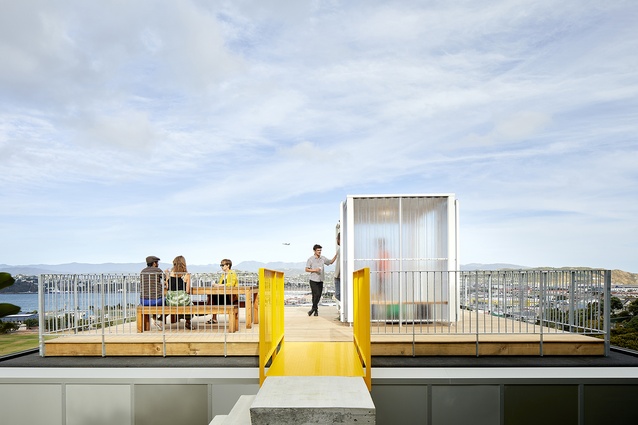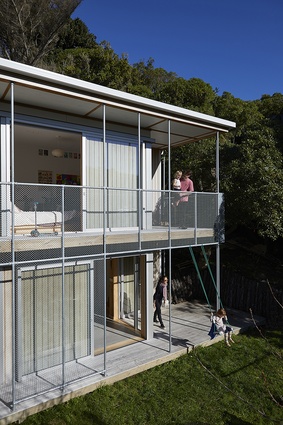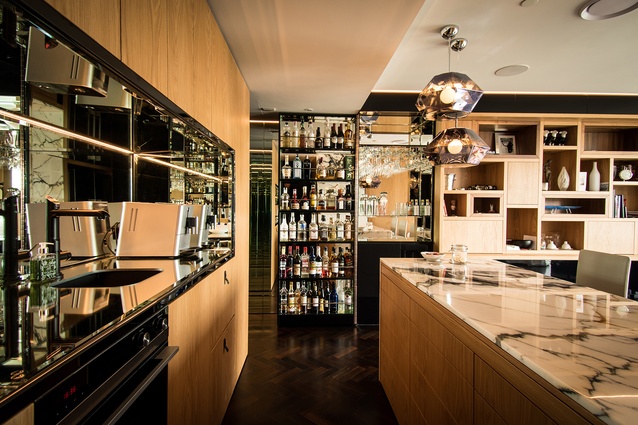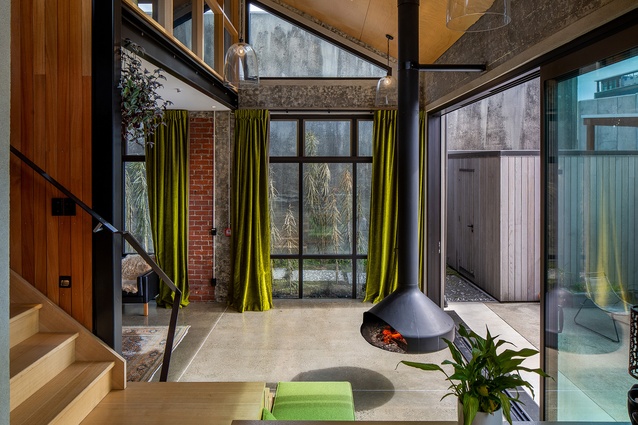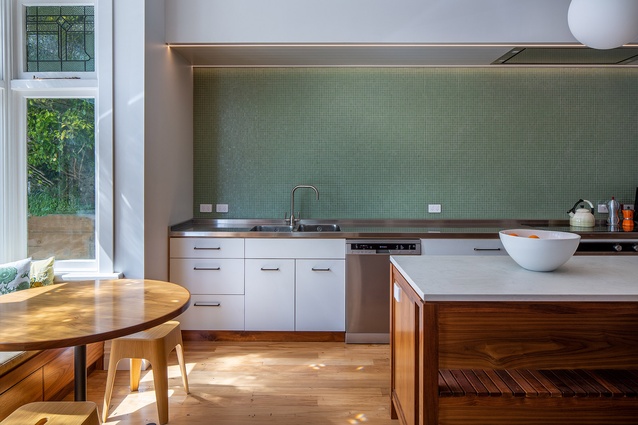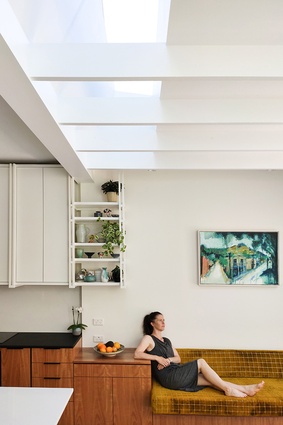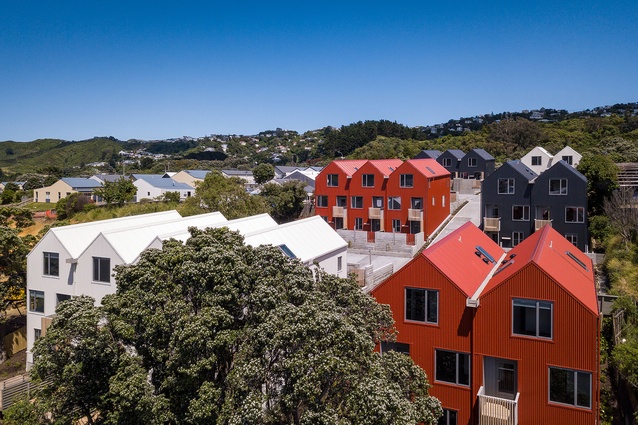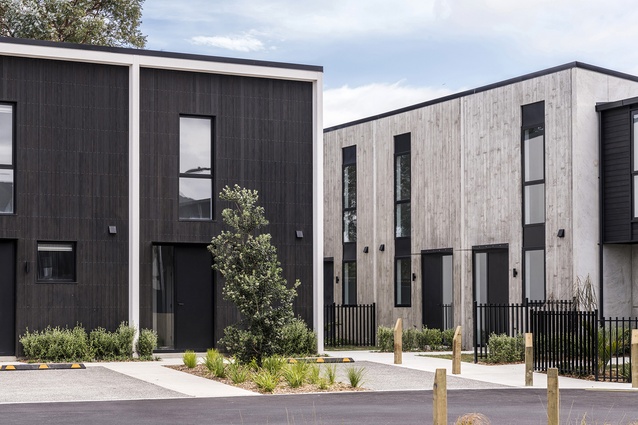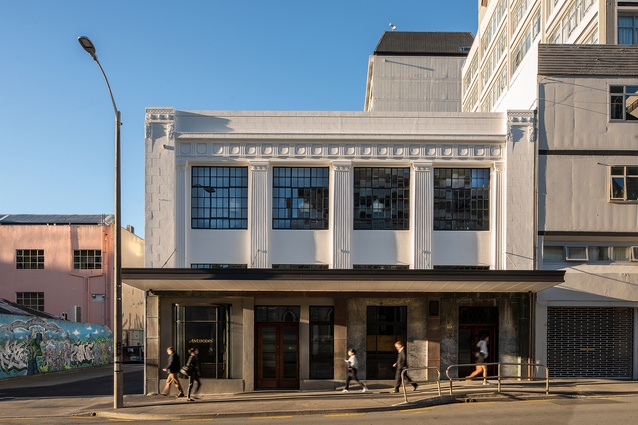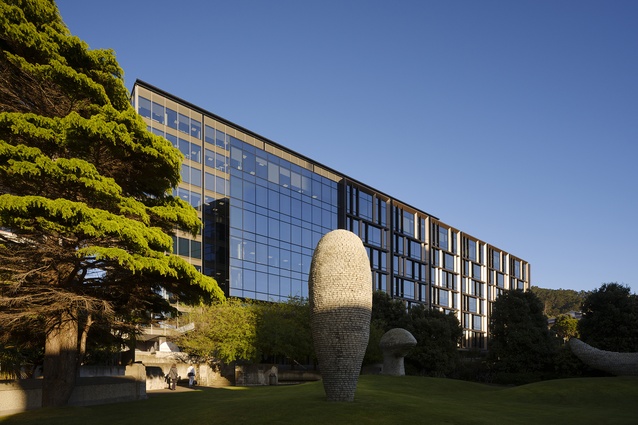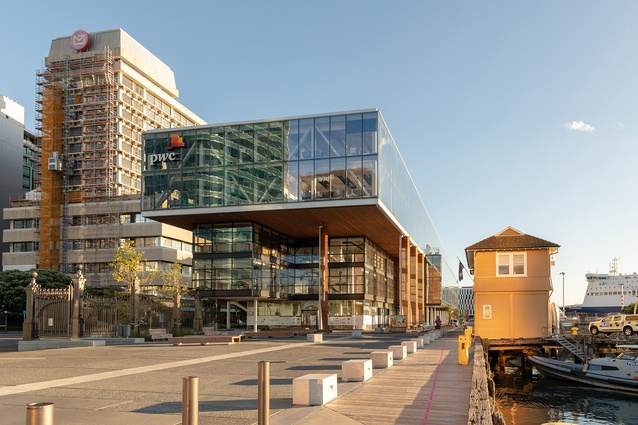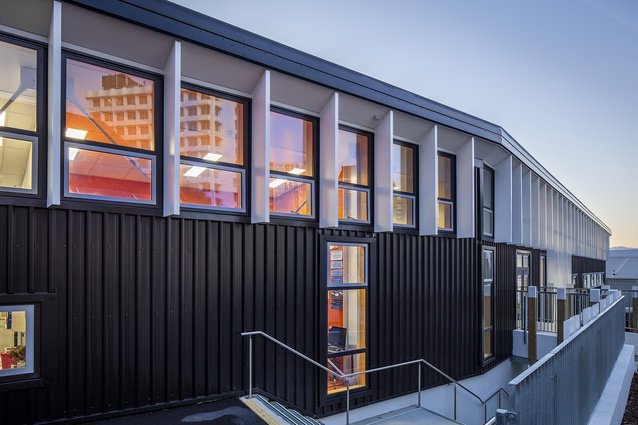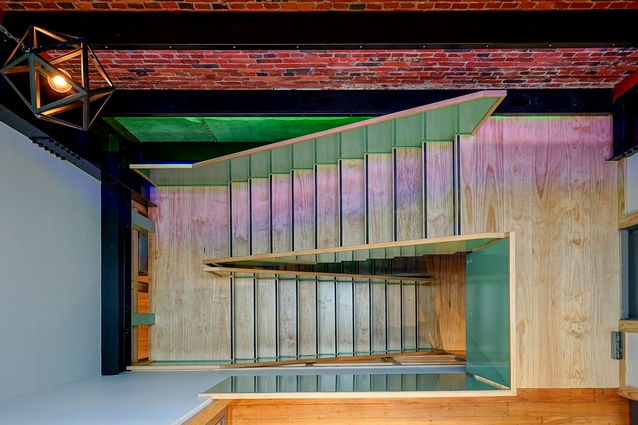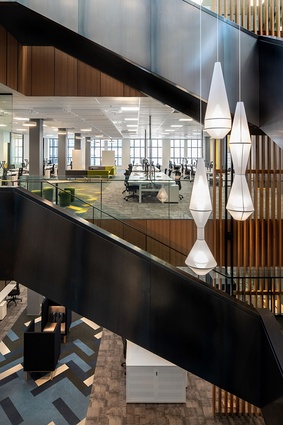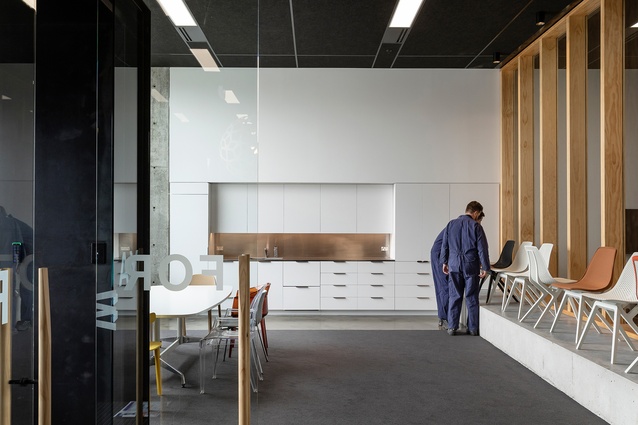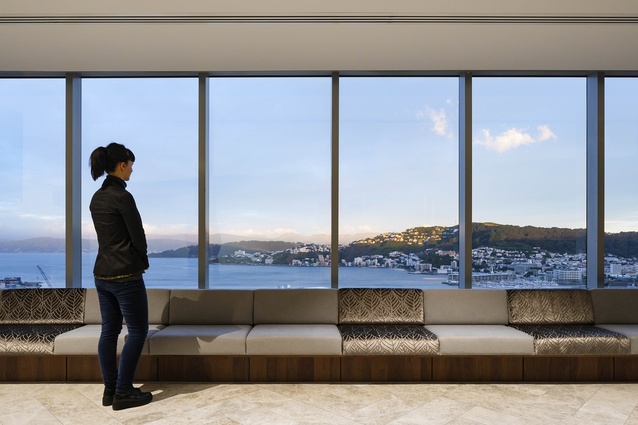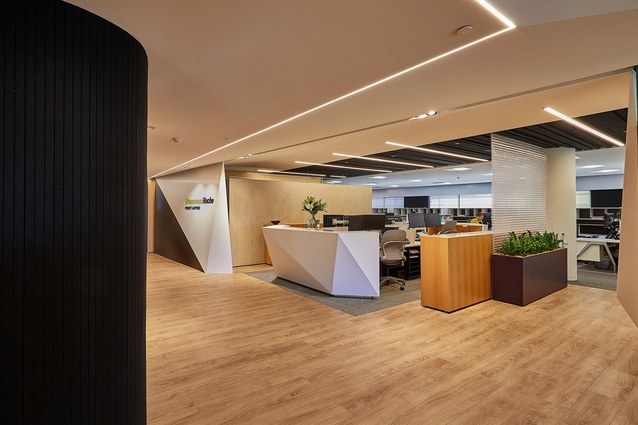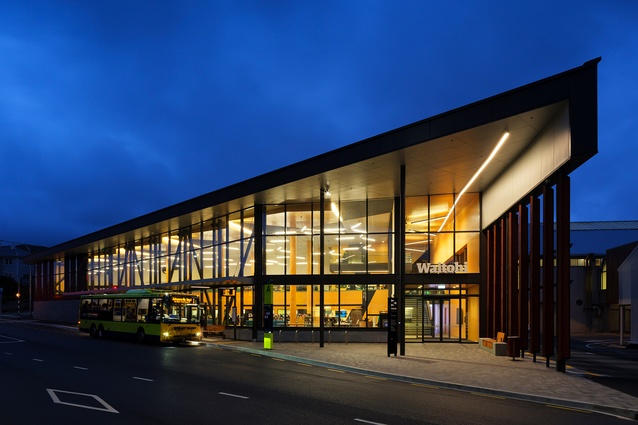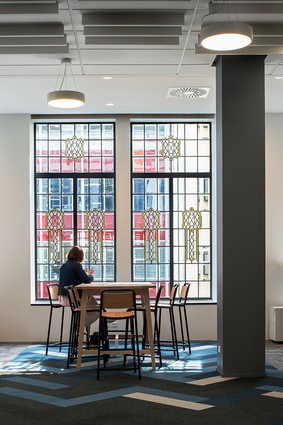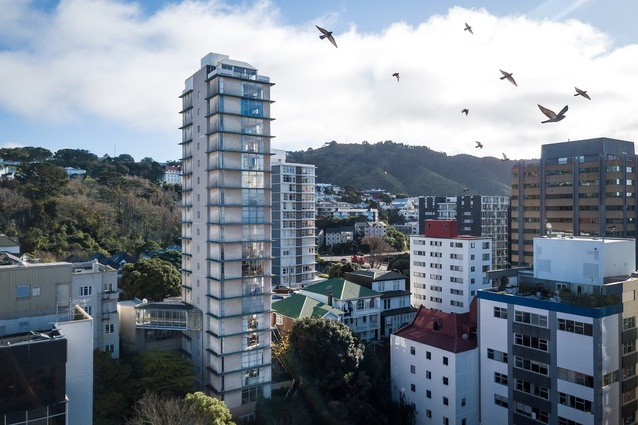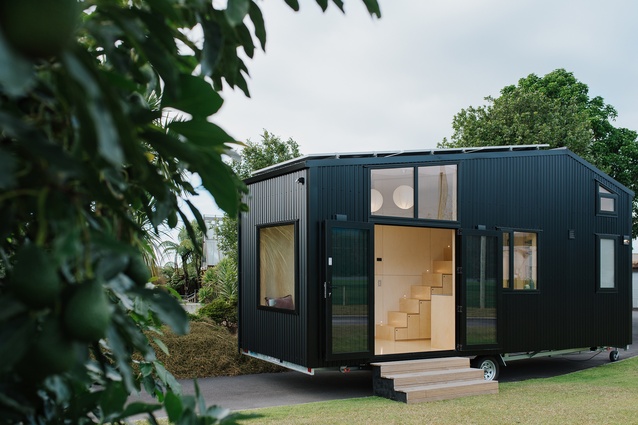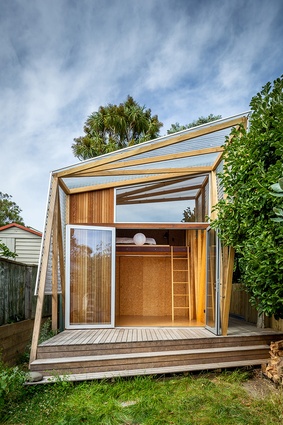Winners revealed: 2020 Wellington Architecture Awards
The capital region saw 28 projects named as winners in this year’s Te Kāhui Whaihanga New Zealand Institute of Architects (NZIA) Wellington Architecture Awards, including heritage projects, tiny homes, libraries and much more.
The jury was convened by Shauna Herminghouse, who was joined by fellow Wellington architects Michael O’Brien and Shani Nelson, Auckland architect Gerrad Hall and Wellington landscape architect and urban designer Robin Simpson.
Herminghouse said, “The stories behind many of the projects were amazing. The jury heard about clients’ strong desire for sustainable architecture and about projects that marked significant changes in the lives of individuals and communities.”
“We were delighted by the craft and expertise demonstrated across all scales of work,” she continued. “We were especially heartened to see a number of modest projects built at the rear of sections or on seemingly unbuildable sites, proving the value that architects can bring to the smallest of projects.”
See the full list of winners with jury citations below:
Housing
Riverside Bach by a.k.a Architecture
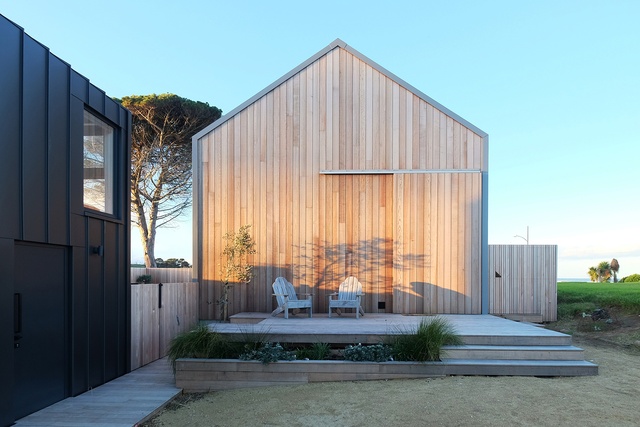
This simple, unadorned, but skillfully composed bach was designed and built to test a 7 metre x 7 metre typology for future use as infill and affordable housing. A very informed architectural brief from the client included a counterweighted upper floor plate which can be raised to give volume to the living room below, or lowered when family come to stay and extra sleeping space is needed. Scale and detail are key to this beautiful timber-clad bach that utilises small dwelling tactics to achieve comfort and flexibility within a skillfully composed and detailed envelope.
Paetawa Beach House by Andrew Sexton Architecture
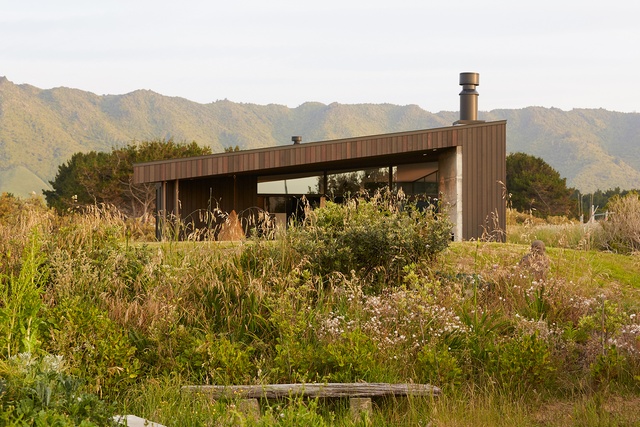
This house’s beauty comes through its craft and contrasts: a rugged timber and concrete exterior, and refined details and finishes throughout the interior. The twisting geometry of the roof, a response to the strong sun, nestles down over private spaces and lifts to extensive views. Thanks to the house’s high-level glazing, the roof seems to float over interior walls and joinery. In a delightful change from typical beach house interiors, dark materials provide a restful sanctuary from the sun.
Robinson Crimp House by architecture RobinsonCrimp
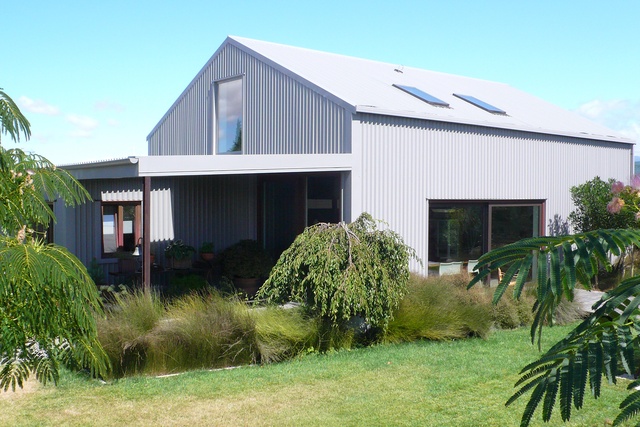
What started as a shed renovation evolved into a new house which is the result of extensive research and interrogation of materials, and mastery of construction techniques and engineering. An impressive 70 per cent of the house’s materials are recycled and, except for a solitary sealant, all construction materials are VOC-free. The owner-architects led a collaborative team, including builders and the local council, in an exploratory and educational process. There is a curiosity-shop richness to the project – each element has a re-use story that is worth telling. The house successfully re-imagines what a low-cost, low energy dwelling can be.
Vera Street House by Parsonson Architects
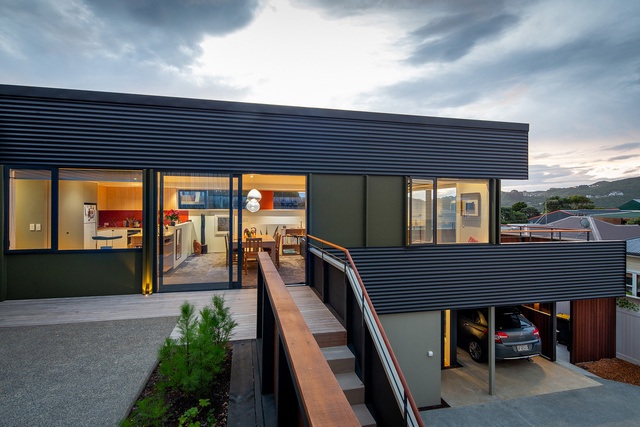
This house on a subdivided section certainly doesn’t shrink away at the rear of the site. A strong band of dark corrugated metal folds over the façade, linking the upper and lower levels and serving as a strong unifying device that forms the main address on approach to the house. The corrugated iron elements, and subtle references to the client’s love of tramping, art, and the outdoors, give a tailored character to the house. A modest but not shy house has created a delightful living environment for the owner, inside and out.
Waikanae House II by Herriot Melhuish O’Neill Architects
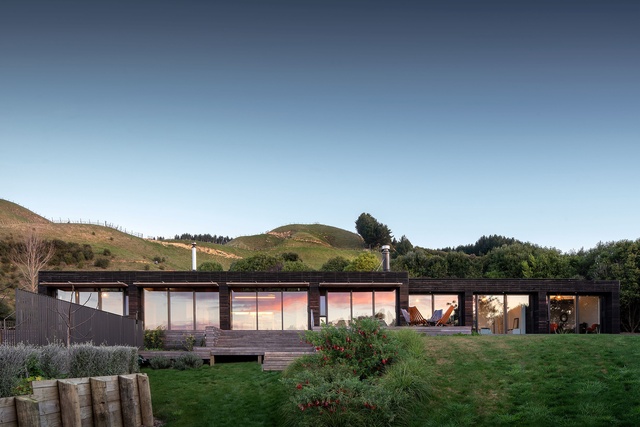
This house, clad in a linear cedar and macrocarpa screen, opens up to sun and views on the hills of the Kapiti Coast. The architects guided the clients through a staged build of the house, which incorporates the key moves of passive solar design, shading, and natural ventilation. The continuation of timber paneling through the interior of the house maintains the casual but clean feel of the exterior.
10x10 House by Patchwork Architecture
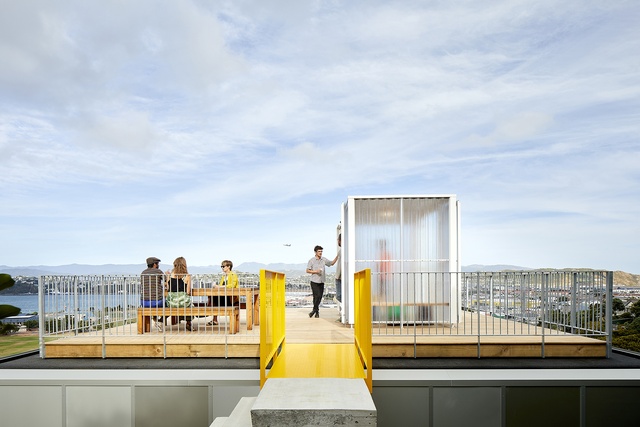
This adventurous and rigorously structured building is a house for the brave, evidencing a confidence that steep sites in Wellington need not stand in the way of cleverly designed and built houses. A concrete core and impossibly thin columns cling to the clifftop, with a 10-metre x 10-metre square forming the basic house structure. Rigorously planned, bold and unapologetic, the design also creates useable external spaces with decks and terraces. An expansive roof terrace with a playful ‘bus stop’ shelter to enjoy the views makes the climb up worthwhile.
Hotbox by Patchwork Architecture
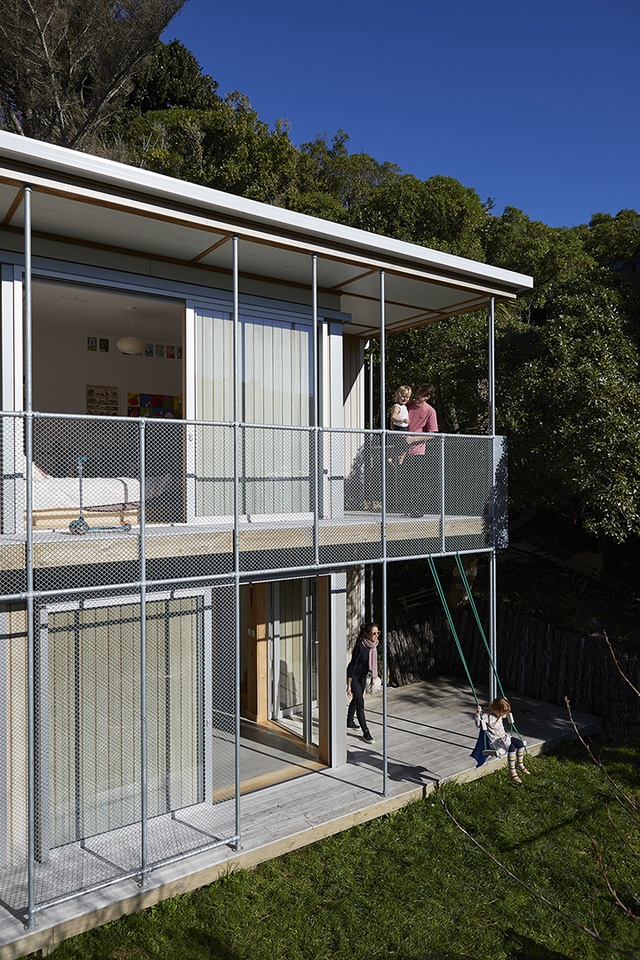
The house, designed in close partnership with the client, is a great study in sustainability going hand-in-hand with buildability and design, all on a tight budget. The design maximises passive solar design performance, and is tailored to construction techniques governed by the difficult site access and self-build approach. A warm palette of interior materials, including textured macrocarpa timber lining, contrasts with the industrial exterior. Metal mesh screens the terrace, supporting deciduous climbers which will further manage the solar gain.
Housing – Alterations and Additions
802 Parkin Apartment by foster+melville architects
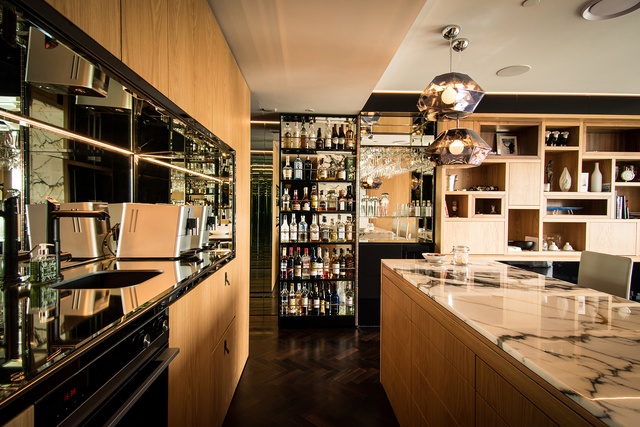
Inhabiting this small but luxurious apartment is like being inside a mirrored jewelry box: surprises are revealed everywhere you look. A high level of craftsmanship and design ability, and good material selections for the extensive joinery units, have culminated in an apartment that skillfully engages light, reflection and space-expanding devices to create a varied world in its 55 square-metre footprint. A sense of glamorous extravagance allows the apartment to transcend its spatial limitations and provide a characterful living environment.
Carbonic Ice Apartment by John Mills Architects
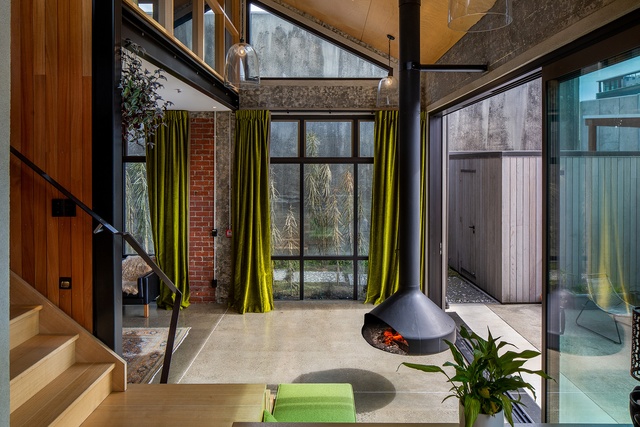
A former fishing company warehouse is transformed into a flexible series of spaces that accommodate both intimate living and larger entertaining spaces. The patina of the original walls is retained in the outside courtyards, which are all part of the entry experience. Interior spaces are shaped within the frame of the warehouse, with level changes and strategically deployed colours that complement the raw texture of the warehouse. Unexpected tranquility is created within the transformed shell of the industrial building.
Mount Victoria House Alterations by Mary Daish Architect
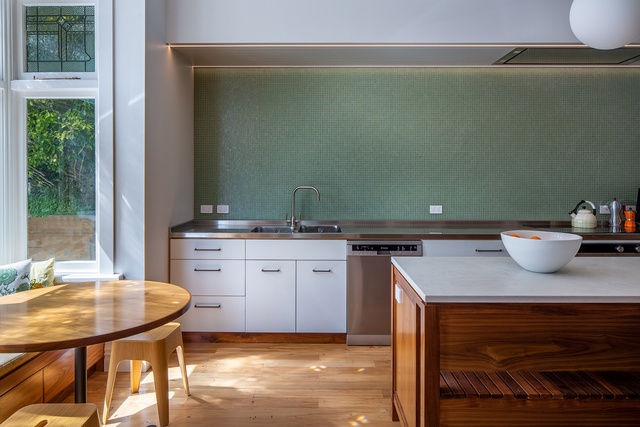
This transformation through alteration of a heritage villa is the result of a detailed examination of spaces and a sensitive understanding of the client’s way of living. Through rearranging the function and flow of rooms, the careful design edits out what didn’t work, strategically adds modern joinery in the kitchen and bathroom and rich oak joinery to create a snug, and draws in light to rejuvenate a house which should have a comfortable and enduring future. Doorways between spaces have become carefully considered features framing views through the house.
Resene Colour Award
Colour is used with as much judicious care as has been extended to the design of alterations. It is the small applications of colour done carefully that bring this space to light. A deep, moody green brings a further cozy, refined character to the lounge ‘snug’, while a soft green hue connects other living spaces to the exterior palette and greenery outside.
Thorndon Villa Light Catcher Alteration by Lovell and O’Connell Architects
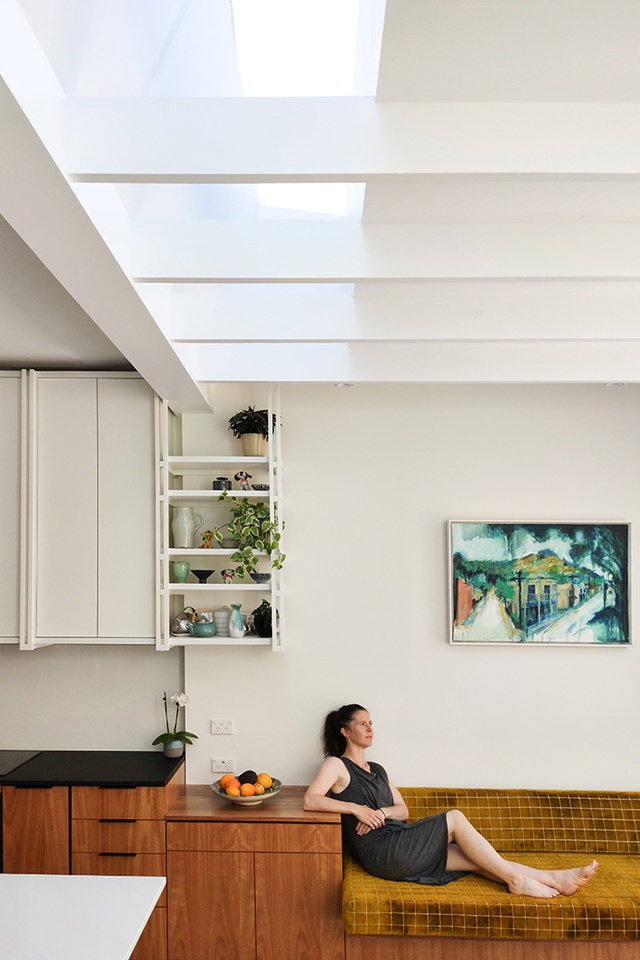
This carefully crafted small extension to an 1870s heritage villa transforms the existing house well beyond its small footprint. Far from the traditional lean-to add-on, the extension takes advantage of every opportunity to admit light, facilitate cooking as a sociable pastime, and provide comfort and a connection to the rear garden. Skylights and slot windows are skillfully inserted to allow to the play of light on an artfully textured extension wall.

Housing Multi-unit
Adelaide Road Townhouses by architecture+
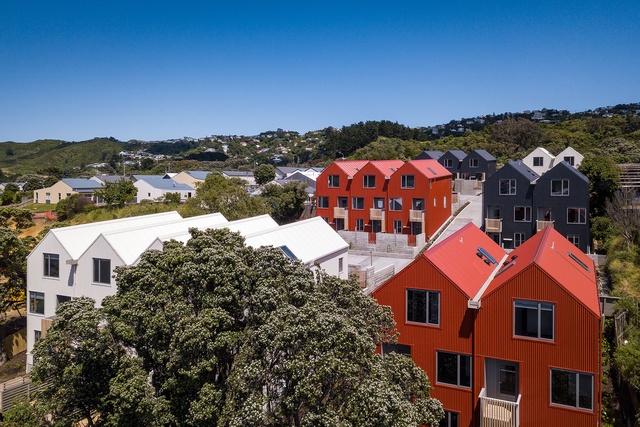
This vernacular multi-unit project establishes an identity based on New Zealand domestic architecture traditions. The townhouses maintain a relationship to the local character of the streetscape through their scale and form, with a simple gable and clear identity. Excellent site planning balances and delineates public and private domains down the length of the site, providing outlooks for everyone. Individual units have received careful attention; light is admitted deep into internal spaces through turning the stairwell across the unit, a move which also partially separates kitchen and living spaces.
Resene Colour Award
A simple but vibrant palette of red, white, and black gives individual identity to blocks of townhouses while powerfully unifying the site. Inside, an unexpected touch of pale blue flows down the internal stair, complementing the natural timber screen.
Patetutu by Colab Architecture
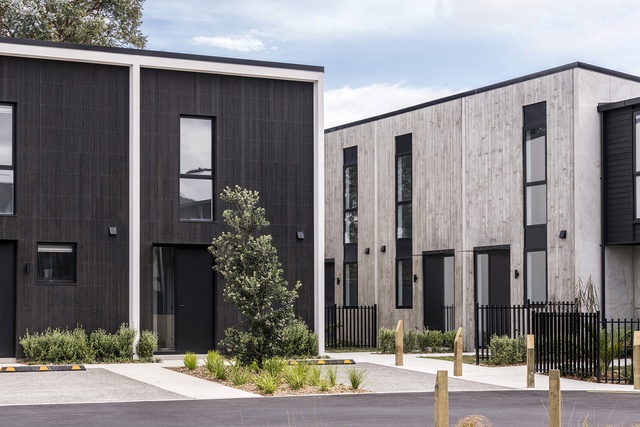
A long history led to the recent opportunity for an iwi/development company community housing development on the historic site of Paetutu Kainga. Successful site planning balances the public realm with the private facilities for each townhouse. Textured and robust materials – timber and concrete – are used with highly controlled detailing. Cultural placemaking is a well-integrated design feature; the path through the community of two- and three-story dwellings to the river’s edge is lined with artworks that tell the story of Rona and te Marama (the moon).
Commercial Architecture
Antipodes Skincare Heritage Refurbishment by Architecture Workshop
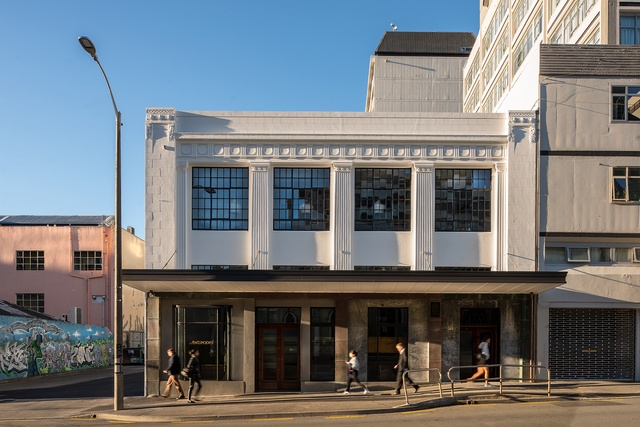
This extensive refurbishment of a 1930s building superbly demonstrates how architecture can express, externally and internally, an organisation’s brand and ethos, and can integrate this work with a significant seismic upgrade. The Antipodes building achieves a delicate balance of gentle touch and industrial aesthetic. Raw finishes and muscular seismic structural additions complement the fine interior detailing of oak timber, acoustic panels, patterned tiles, and playful decorative motifs.
Bowen State Building by Warren and Mahoney Architects
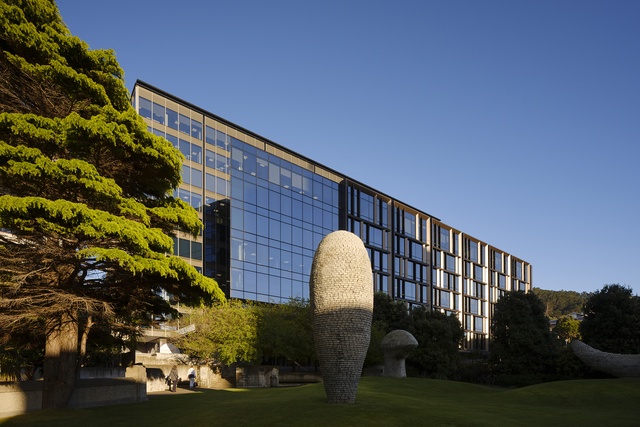
This significant upgrade of the Bowen State Building rejuvenates and extends a significant Modernist building. The architects have respected the muscular form of the original building, and bronze façade detailing gives a nod to the adjacent Beehive. Sculptural fins break down the scale of the lengthy façade, and the expanded floorplate redefines the building’s street entry, which is marked by a sleek new shard in the façade. This is a fine example of sustainability in action, through the rehabilitation of a legacy Brutalist building into a modern government workplace.
Site 10, Kumutoto by Athfield Architects
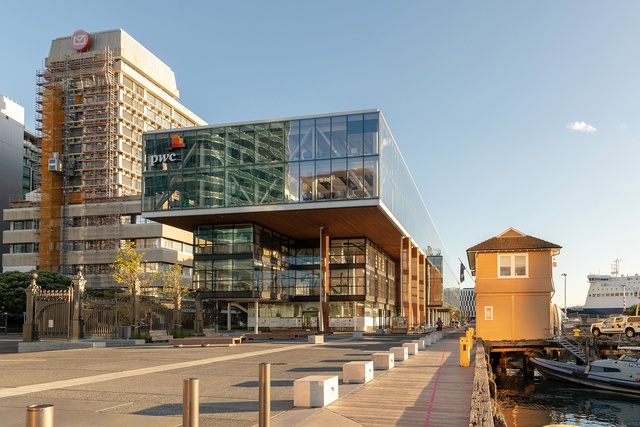
This fully base-isolated building demonstrates the sensitivity required to design and deliver a contemporary building on such a prominent and significant waterfront site. The building responds to the detailed grain of its place with a design generated from its rich context, and it acknowledges the natural and built history of its locale – for example, the adjacent wool store – as its forms and façade effect a transition from street to sea. The building provides a protective colonnade on a main arterial route, sailing a contemporary office over the top to create a gateway to the harbour.
Education
Thorndon School by McKenzie Higham Architects
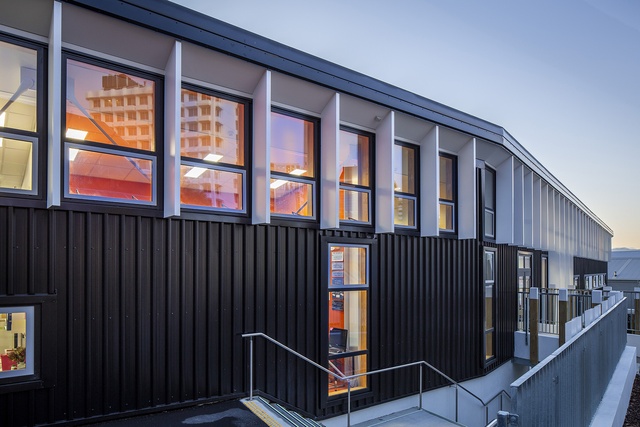
Thorndon School skillfully gleans every bit of space from an irregular and tight urban site. Stepping down from the main entry, the courtyard gathers the buildings, students, and teachers into a connected learning village. Flexible and interactive forms of modern learning environments spill into the outdoor spaces. The architecture helps create and express a sense of community. The successful engagement with mana whenua and the prioritisation of children’s experiences is evident in the sophisticated exterior and playful interior.
Hospitality
The Marion by foster+melville architects
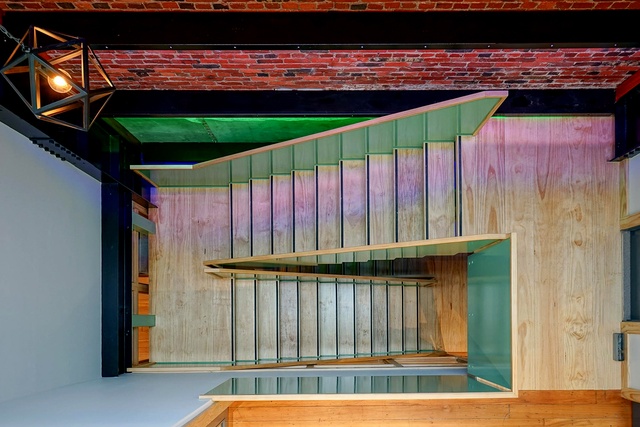
An aspirational client and a responsive architect came together to realise this vibrant urban hostel. The upgraded existing commercial building and adjoining residence exude character, inside and out, and stand out from the eclectic mix of buildings on their street. The rich interior experience is achieved using recycled timber, black structural bracing, vibrant tiles, and colourful lights skimming the brick walls in the stairwell. Designed to create opportunities for social interaction amongst its occupants, the animated building is ready to play.
Resene Colour Award
The singular minty green of the exterior gives the building identity without adding further visual complexity to an already cluttered streetscape. The unifying colour is used as a connecting element with the adjacent house and in the interconnecting social stair at the heart of the building. The simple colour is complemented by other rich colours applied to tiles and lighting throughout the interior.
Interior Architecture
FNZ Office Fit-out by Herriot Melhuish O’Neill Architects
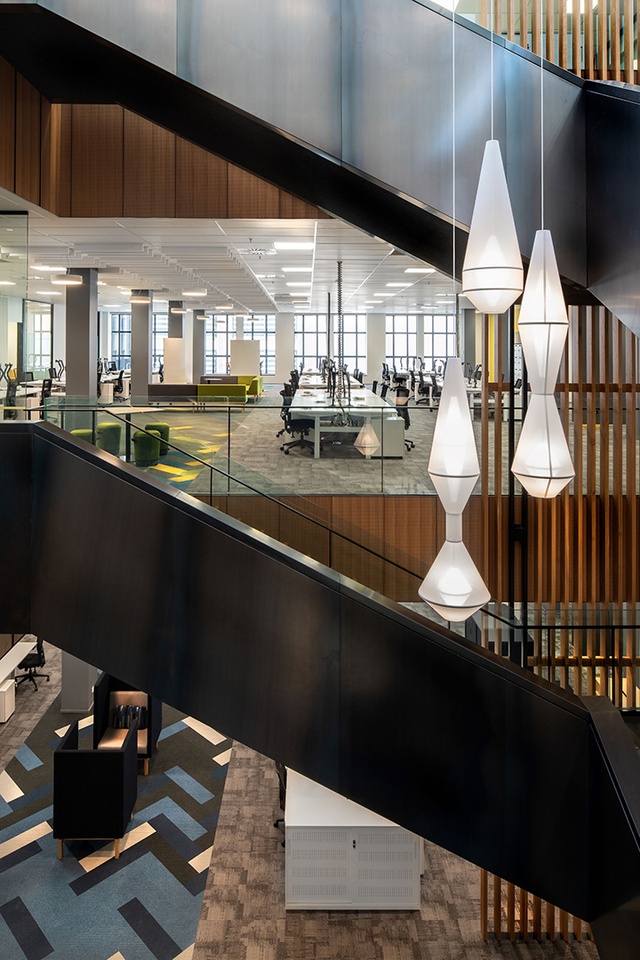
Taking full advantage of the extensive upgrade of a heritage building, this fit-out is all about the light, which spills down through the central atrium and comes in from the sides to fill the deep floorspace and high floor volumes. A subtle palette and patterning complement the modernisation of the building. Patterning in the carpet, and on the ceilings and timber screening elements, defines zones and brings character to the space without overwhelming it.
Formway Design Studio by Andrew Sexton Architecture and Harris Architects in association
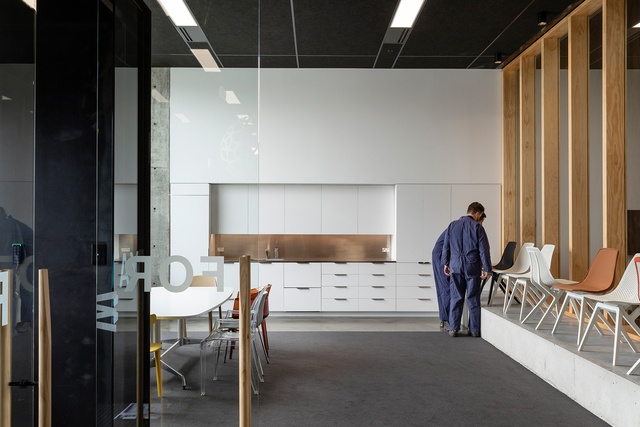
A steel portal inserted into a restored historical façade opens into a lengthy open meeting and office space. A timber and glazed wall runs along the length of the space, separating front and back of house spaces. Black steel portals puncture the timber and glass wall, organising the space and offering glimpses to production spaces. A concrete plinth extends along the wall, creating a stage to display the star of the show: the elegant chairs that the company designs. A simple palette of materials and concepts doesn’t compete with heritage space and modern products created within the studio; rather, it enhances and beautifully organises it.
Forsyth Barr Workplace by Warren and Mahoney Architects
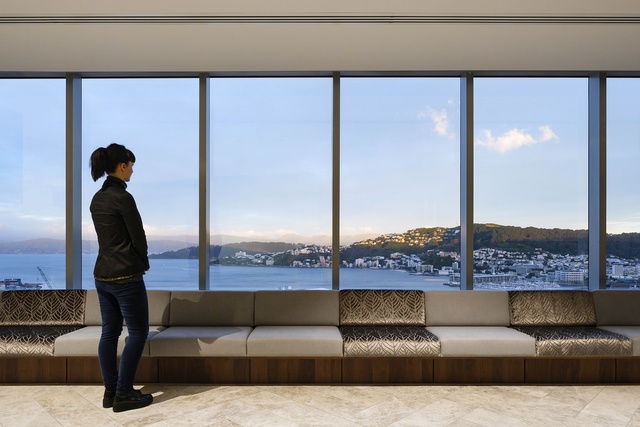
This elegant fit-out makes evident just how much this company values its clients. Visitor hosting spaces flow outward from the entry, occupying the full width of the harbourfront view. Slick and luxurious finishes and fine details draw visitors into the space and adjoining private meeting rooms. A sleek staff kitchen is positioned confidently in the middle of the back-of-house space, providing a sense of hospitality for the staff as well.
Greenwood Roche by Custance Associates
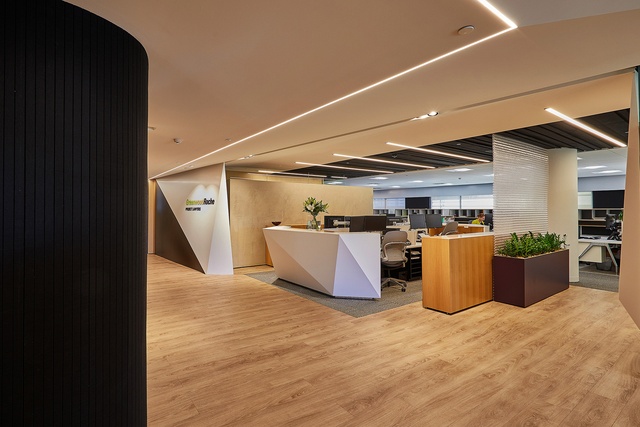
Breaking down the traditional front and back of house separation at law firms, this workplace uses highly crafted design to open up the entire workplace to clients. Organising geometries, skillfully deployed, define zones while allowing spaces to flow into each other in a flexible yet controlled way. Hierarchies are broken down through a design approach that privileges transparency and encourages circulation throughout the office. An elegant palette of materials, including custom acoustic ceiling panels, creates a unified layering of elements from the front door through to back-office amenities.
Public Architecture
Waitohi – Johnsonville Library and Community Hub by Athfield Architects
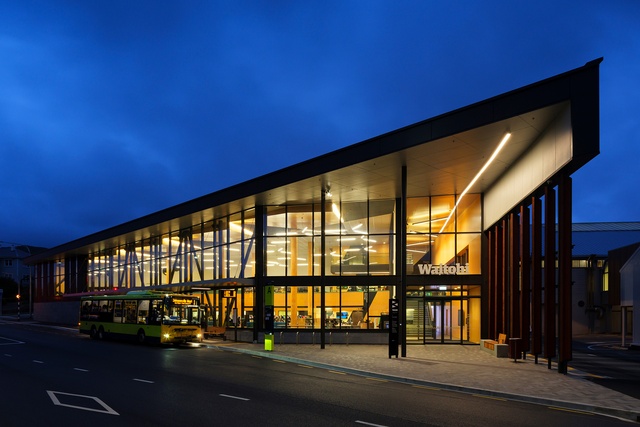
Waitohi sets a benchmark for this growing community, creating a visible and welcoming presence that ties together existing facilities. Containing a library, kindergarten, café, and community meeting rooms, Waitohi has a grand civic scale. Waitohi’s tilted roof plane gives the building its local prominence, and generous canopied edges interface with the public domain. The building, with its historical references to the site and former forest, is conceptually strong. Interiors express the story of the place through cultural patterns, tree-like timber columns, and warm materials with forest colourways. The project is an outstanding outcome of a successful consultation process, and has created a real civic heart for this growing town centre.
Heritage
Antipodes Skincare Heritage Refurbishment by Architecture Workshop

A beautiful restoration of a heritage 1930s façade and internal entry stair, and the reactivation of the building as the base for New Zealand company Antipodes, has revived the building’s graciousness. The heritage upgrade achieves a complex balance of adaptive reuse, sustainable solutions, and resilient seismic upgrades, enlivened by the bold move of cutting a lightwell in the building to illuminate a modern working environment. The refurbishment overlays new materials, textures, and themes with sensitivity, while accommodating a modern commercial environment.
Harbour City Centre Annexe by Herriot Melhuish O’Neill Architects
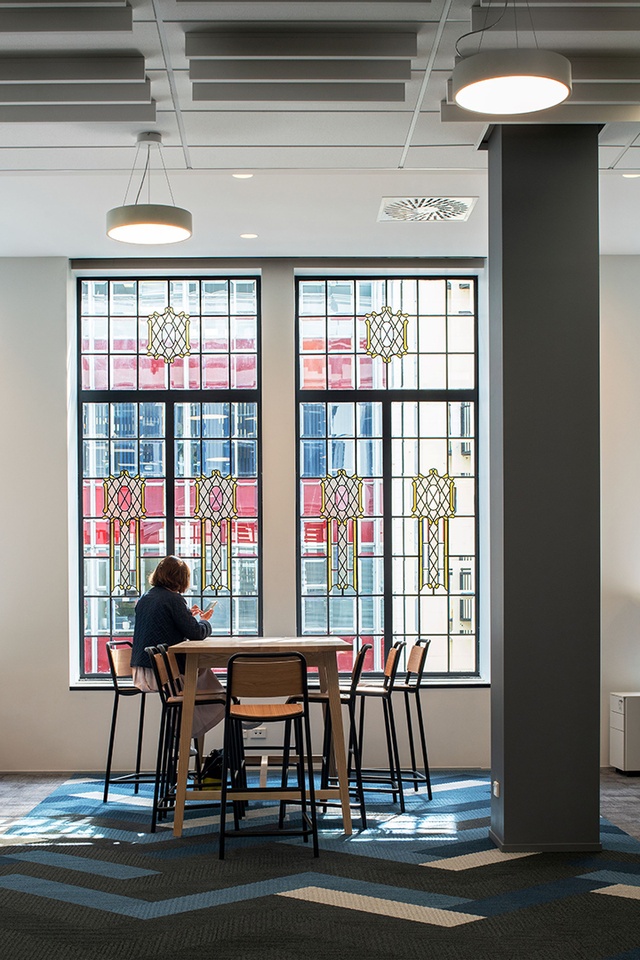
Extending through the full width of a city block, the upgraded Harbour City Centre Annexe re-presents two meticulously restored façades to Wellington’s CBD. A new glazed penthouse addition is set back so as to be unseen from the street level, and new skylight floods a new central atrium and stair with daylight, delivering natural light deep into the building. Natural light also plays on textured walls in the reconfigured core stairs. This is a transformative upgrade, both preserving and modernising a heritage building, and thereby extending its life well into the future.
Enduring Architecture
Jellicoe Towers (1964) by Allan Wild - Architect
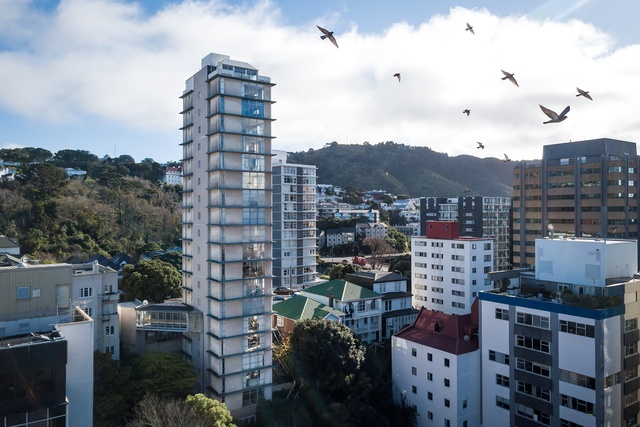
The proportions of the seemingly impossibly svelte apartment building completed on the ridgeline of The Terrace above the Wellington CBD in 1968 were a generous gesture to minimise obstruction of neighbours’ views. The Modernist simplicity of the one-apartment per-floor tower, articulated by each floorplate extending beyond the face of the building, has stood the test of time. To enter the tower by the glazed bridge is to appreciate the feat of building such a structure on such a steep site. Its recent upgrades should allow this landmark building to stand sentinel for a long time on the hill above Wellington, where it is an outstanding feature of the city’s skyline.
Small Project Architecture
First Light Tiny Home by First Light Studio
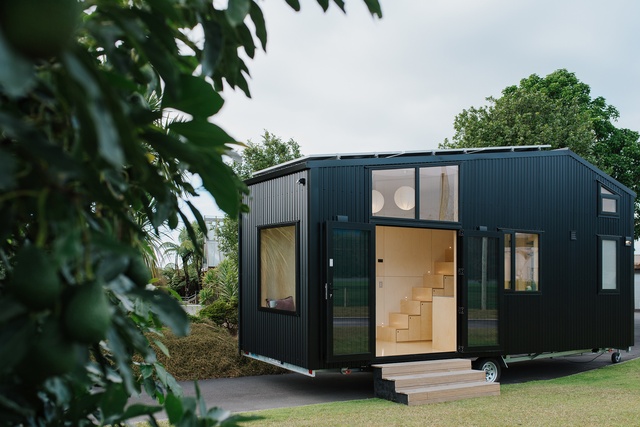
Inhabiting this house is like living in one interconnected, interlocking piece of joinery. The design is simplified down to just two materials, creating a clean, organised space that is a refreshingly well-designed alternative to the rustic aesthetic of the typical tiny home. Everything is thoroughly considered for its function, transportability, and ergonomic performance. Meticulous planning was required, from resolving the weight of materials and their distribution on the trailer, to manoeuvering on-site and within the tiny home. The design is pure, uncluttered, generous, and well-articulated; the house is a great example of resolving design down to the millimetre when it counts.
Herald Street Garden Studio by Parsonson Architects
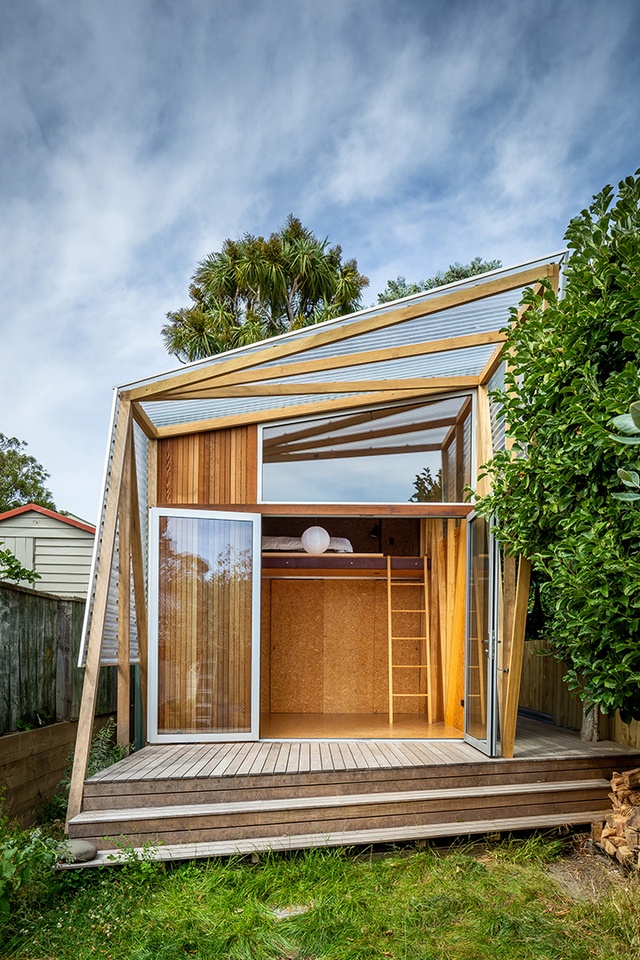
This delightful gem of a studio introduces a contemporary design language to the tradition of a sleep-out/studio down the back of the section. The angled timbers, while not the primary structure, are the defining frame of the studio; everything else is pared back to keep them as the feature, inside and out. This is livable, approachable, and attainable high-quality design – a brilliant example of the relevance of architecture to everyday living on tight urban sites.
The NZIA Local Awards programme has been supported by Resene for the last 30 years.

